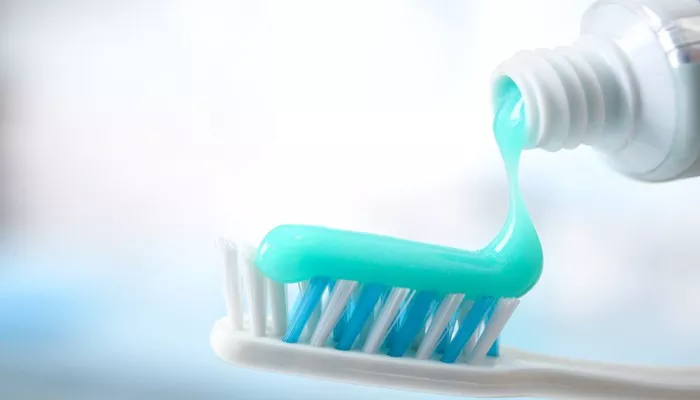Whitening toothpaste is a type of toothpaste designed to remove surface stains from the teeth. It often contains mild abrasives, chemical agents, or bleaching ingredients. These compounds work by polishing the teeth or dissolving stains caused by coffee, tea, tobacco, or red wine.
How Whitening Toothpaste Works
Most whitening toothpaste uses mechanical or chemical actions. Mild abrasives help scrub away surface discoloration, while low concentrations of hydrogen peroxide or carbamide peroxide provide chemical bleaching. These actions aim to brighten the smile without using professional whitening treatments.
Is It Bad to Use Whitening Toothpaste Every Day?
Potential Benefits of Daily Use
Using whitening toothpaste every day can help maintain a brighter smile. It removes fresh stains and may boost self-confidence. Many brands include fluoride, which helps prevent tooth decay and strengthen enamel.
For people who consume staining foods and drinks regularly, daily use may help reduce visible discoloration over time. Whitening toothpaste can be a convenient option for cosmetic maintenance.
Risks of Overuse
Despite the benefits, daily use of whitening toothpaste can pose risks. Over time, harsh abrasives can wear down enamel. This loss of enamel may lead to tooth sensitivity and increase the risk of cavities. In severe cases, it can also expose dentin, causing discomfort and pain.
Impact on Gum Health
Can It Cause Gum Inflammation?
Some whitening toothpaste may irritate the gums. Certain chemical agents or high-abrasion formulas can cause gum inflammation, especially in people with sensitive oral tissues or pre-existing gum conditions. Inflammation can make gums red, swollen, and more prone to bleeding.
Link to Gum Disease
Long-term irritation of the gums can increase the risk of gum disease. When gums are inflamed or damaged, they become more vulnerable to infection. Poor brushing technique combined with abrasive toothpaste can worsen gingivitis or periodontitis.
Enamel Erosion and Tooth Sensitivity
How Abrasives Affect Enamel
Whitening toothpaste often contains abrasive particles such as silica or calcium carbonate. These ingredients polish the tooth surface but can also gradually thin the enamel. Once enamel is eroded, it cannot be restored naturally.
Signs of Enamel Loss
- Increased tooth sensitivity
- Yellowish appearance due to exposed dentin
- Rough tooth surface
- Higher risk of decay
To minimize enamel damage, it is important to use toothpaste with a low Relative Dentin Abrasivity (RDA) value. Many dental professionals recommend alternating whitening toothpaste with a gentler option.
Ingredients to Watch For
Abrasives
Abrasives are the most common ingredients in whitening toothpaste. While effective at stain removal, excessive use can lead to long-term harm.
Peroxides
Hydrogen peroxide and carbamide peroxide are chemical whitening agents. These can cause tooth sensitivity or soft tissue irritation if used excessively or in high concentrations.
Detergents and Foaming Agents
Sodium lauryl sulfate (SLS) is used to create foam but may cause irritation in some individuals. SLS can worsen mouth ulcers or trigger allergic reactions in sensitive users.
Who Should Avoid Daily Use
People with Sensitive Teeth
Individuals who already suffer from tooth sensitivity may find it worsens with regular use of whitening toothpaste. The enamel loss and chemical exposure can intensify discomfort.
Patients with Gum Disease
Anyone experiencing gum disease symptoms should be cautious. Whitening agents may aggravate already sensitive or inflamed gum tissues, delaying healing and increasing pain.
Children and Adolescents
Children should avoid whitening toothpaste unless directed by a dentist. Their enamel is still developing, and the abrasives may cause irreversible damage.
Best Practices for Safe Use
Alternate Toothpaste Types
Consider rotating whitening toothpaste with non-abrasive, fluoride-rich toothpaste. This helps protect enamel and gives the gums a break from potential irritants.
Use Soft-Bristled Toothbrushes
Pair whitening toothpaste with a soft-bristled toothbrush. Hard brushing can compound enamel erosion and gum irritation.
Limit Staining Foods
Reduce the need for whitening toothpaste by avoiding foods and drinks that stain teeth, such as coffee, tea, red wine, and dark berries. Rinse your mouth or brush soon after consuming these items.
What Dentists Recommend
Consultation Is Key
Before using whitening toothpaste daily, it is best to consult a dental care provider. A dentist can assess enamel health, gum condition, and determine if such products are appropriate for your situation.
Professional Whitening Alternatives
For more noticeable whitening without the risks, dentists may offer professional treatments. These include in-office bleaching, take-home trays, and laser whitening. Such treatments provide faster, safer, and more controlled results.
Regular Dental Checkups
Frequent dental visits help monitor the effects of whitening products. Your dentist can identify early signs of gum inflammation or enamel damage and recommend safer alternatives.
Natural Alternatives to Whitening Toothpaste
Baking Soda
Baking soda is a gentle abrasive that can remove surface stains without harsh chemicals. It is often included in whitening toothpaste or can be used on its own occasionally.
Activated Charcoal
Some products include activated charcoal for its absorbent properties. While it may help lift stains, long-term use can also harm enamel if not properly formulated.
Hydrogen Peroxide Rinse
A diluted hydrogen peroxide mouth rinse can whiten teeth with less abrasion. However, it should be used cautiously and not swallowed. Consult a dentist for proper dilution.
Conclusion
Using whitening toothpaste daily has both benefits and risks. It can help maintain a whiter smile and remove new stains, but it may also cause enamel erosion, gum inflammation, and increased sensitivity if not used properly.
To protect your dental health, it’s essential to monitor your oral condition, choose toothpaste with safe ingredients, and consult your dentist regularly. Consider using whitening toothpaste in moderation and supplementing with other safe dental practices. The goal is to achieve a bright smile while maintaining strong teeth and healthy gums.

